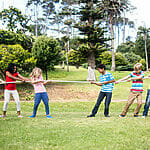As a painter, I often find myself lost in the creative process, exploring different colors and techniques to express my inner world. It’s a process that feels like diving into a deep ocean, where the waves of inspiration and self-discovery can lead me to unexpected places.
And yet, as much as I love painting, I also know that creativity is not limited to the arts. It’s a vital skill that can benefit us in every aspect of life, from problem-solving to self-expression.
That’s why I’m excited to write about ‘Unlocking Creativity: Teaching Artful Expression,’ a topic that explores the ways in which teachers and educators can support creative expression in their students. Whether you’re a parent, teacher, or student, this article has something to offer for anyone interested in unlocking their own creativity or supporting the creative potential of others.
Drawing on my experience as an interdisciplinary artist, I’ll share insights into the challenges of nurturing the creative process, the importance of mentorship, and the ways in which the arts can help students develop problem-solving skills and self-expression.
So, let’s dive in and explore the wonders of creativity together!
Key Takeaways
- The question of whether creativity can be taught is explored, with the author believing in mentoring rather than teaching.
- The creative process is not linear and must be nurtured, with no correct answers in the process.
- Every student should have a chance to re-examine what creative expression truly means, and any learning should integrate the arts as a form of self-expression.
- School curriculum should support artistic development, but academic rigor may mean less time available for art in the daily schedule.
Can Creativity Be Taught?
I’ve been asking questions about teaching creativity for 30 years now, and let me tell you, creativity can absolutely be taught, but it requires nurturing and support throughout the non-linear creative process.
As an artist and art educator, I believe that fostering creativity is about giving students the time, space, and materials to experiment and explore. It’s about creating a safe and supportive environment where students feel free to take risks, make mistakes, and learn from them.
The role of experimentation is crucial in teaching creativity. Students need to be encouraged to try new things, to explore different techniques and materials, and to take risks in their artistic expression. This means giving them the freedom to make mistakes and learn from them, and to understand that there are no right or wrong answers in the creative process.
By embracing experimentation and encouraging students to take risks, we can help them develop the confidence and skills they need to become more creative in all aspects of their lives.
Supporting Creative Expression
As an artist and educator, I’m passionate about supporting creative expression in my students. I believe that every student has a unique creative potential that can be unlocked through open exploration and nurturing guidance.
To support this, I often incorporate collaborative projects and multi-disciplinary approaches in my teaching. Collaborative projects not only encourage students to work together and learn from each other, but they also allow for a wider range of ideas and perspectives.
Multi-disciplinary approaches, such as integrating art with science or social studies, can also help students see the many ways in which creativity can be applied in different fields. By providing opportunities for free expression and exploration in a supportive environment, I hope to help my students embrace their own creativity and believe in their potential.
How Does Teaching Artful Expression Boost a Child’s Brain Power?
Teaching artful expression can significantly boost your child’s brain power. Engaging in creative activities like drawing, painting, or sculpting stimulates various areas of the brain, enhancing cognitive skills such as problem-solving, critical thinking, and spatial awareness. Additionally, artistic expression fosters emotional intelligence, self-confidence, and communication abilities, all contributing to a well-rounded and developed brain.
Teaching Art at Different Ages
When teaching art to students of different ages, it’s important to consider their developmental stages and provide appropriate opportunities for artistic exploration and growth.
For young children, sensory experiences are crucial for their artistic development. They need to explore different textures, colors, and shapes to discover the world around them. As an art teacher, I provide them with a variety of materials such as clay, paint, and paper to encourage them to express themselves freely.
I also encourage them to talk about their art and ask questions about their process, which helps them develop their critical thinking skills.
Middle school students, on the other hand, often want their art to look perfect. This can make or break their positive attitude towards art. As their teacher, I provide them with guidance to understand that art is not about perfection but about self-expression.
I encourage them to embrace their own creative process and offer constructive feedback to help them improve their skills. I also create a safe space for them to explore their emotions through art, which helps them develop their self-awareness and empathy towards others.
Overall, teaching art to students at different ages requires patience, creativity, and empathy to support their growth and development.
Encourage students to ask questions about their art and process.
Provide a variety of materials for young children to explore their senses.
Foster a safe and supportive environment for middle school students to embrace their own creative process.












